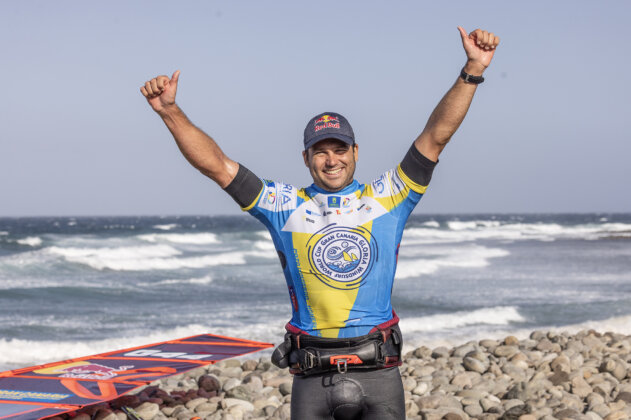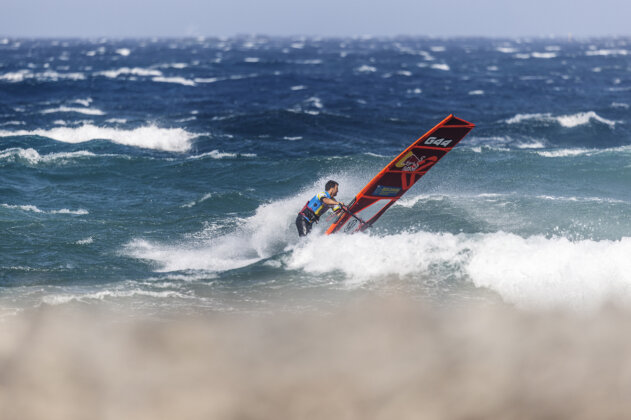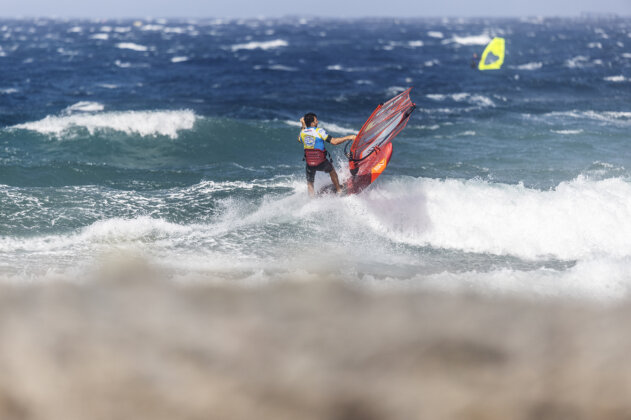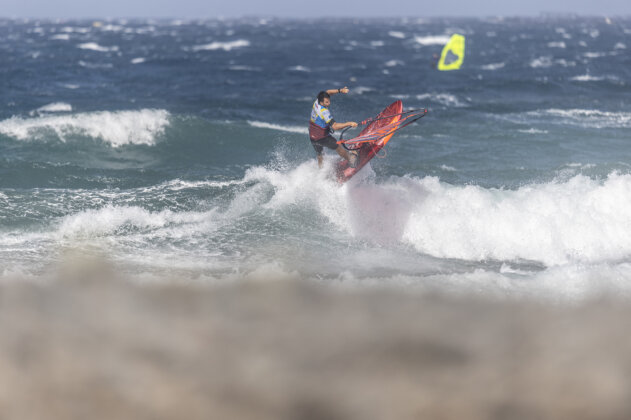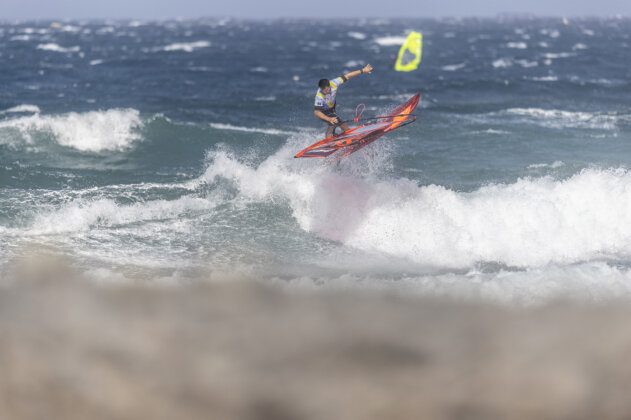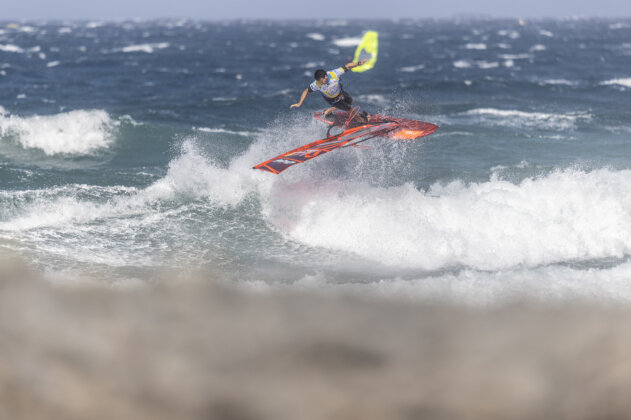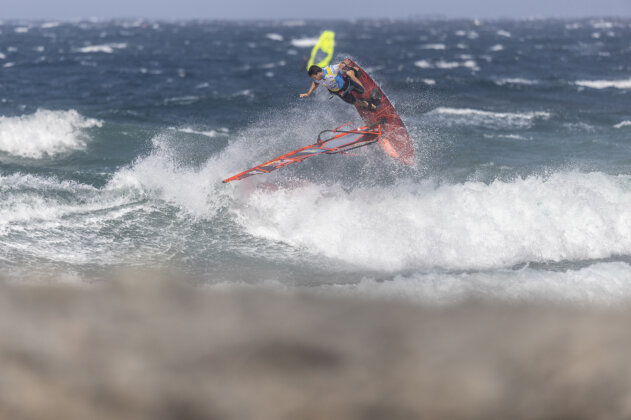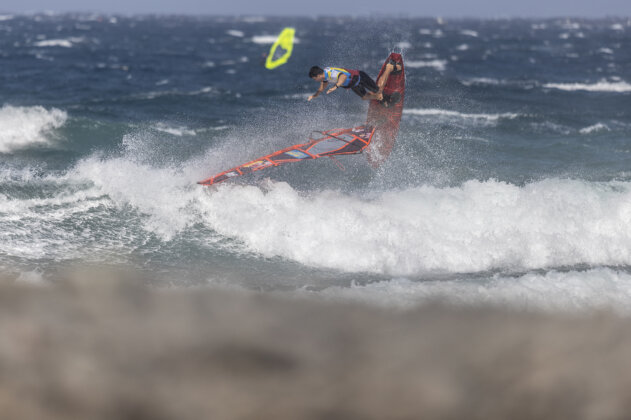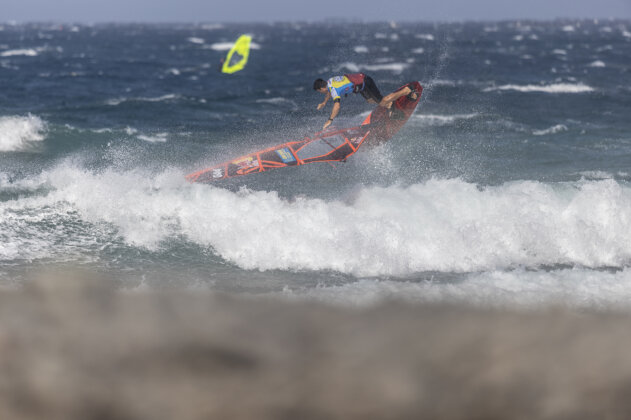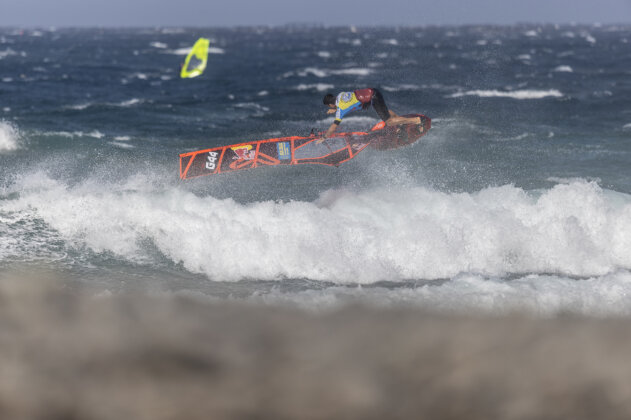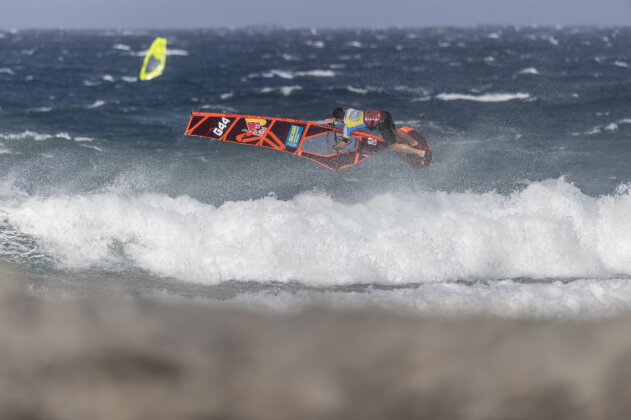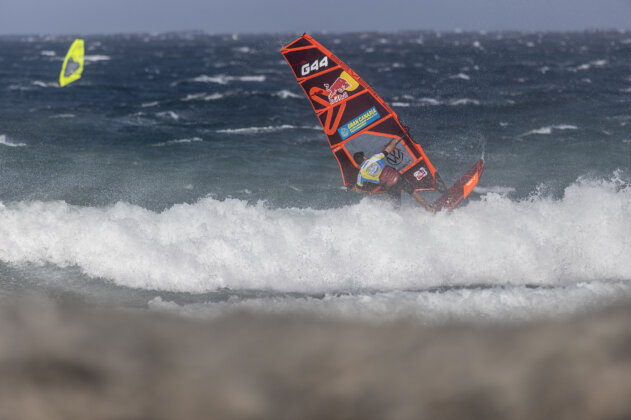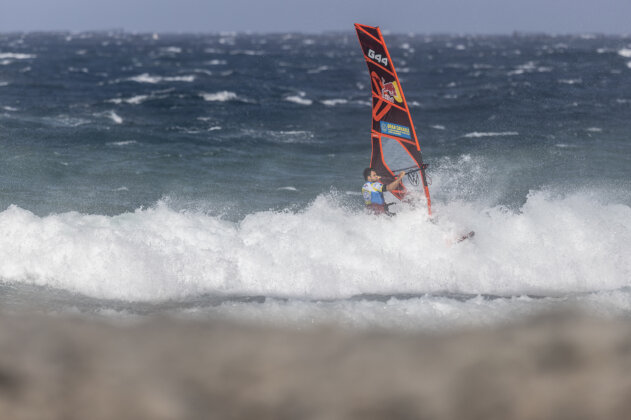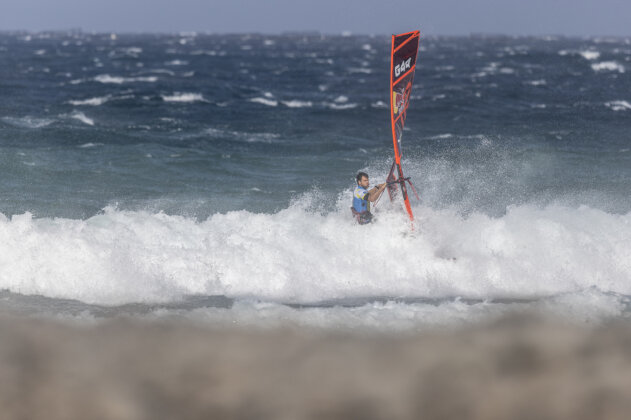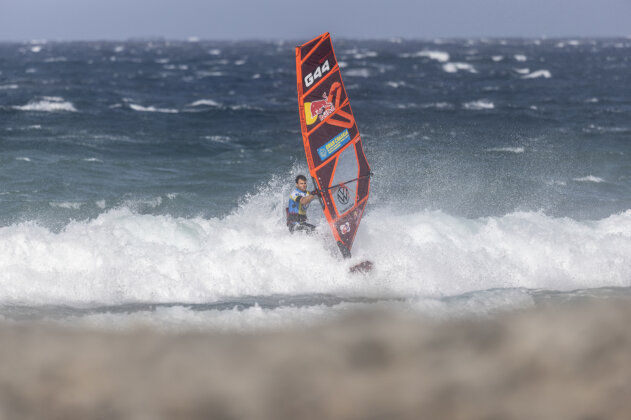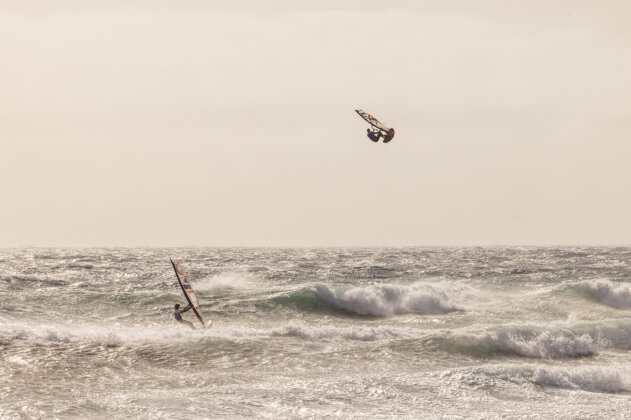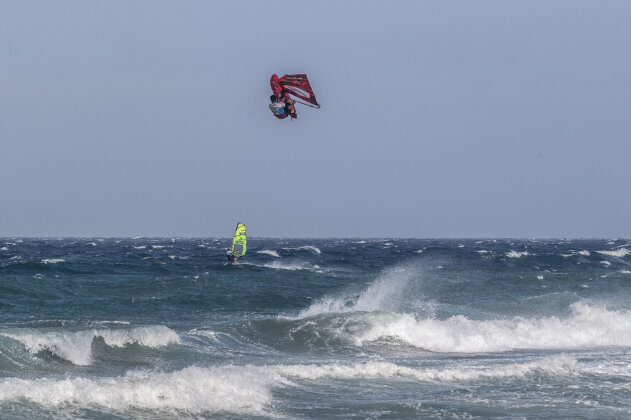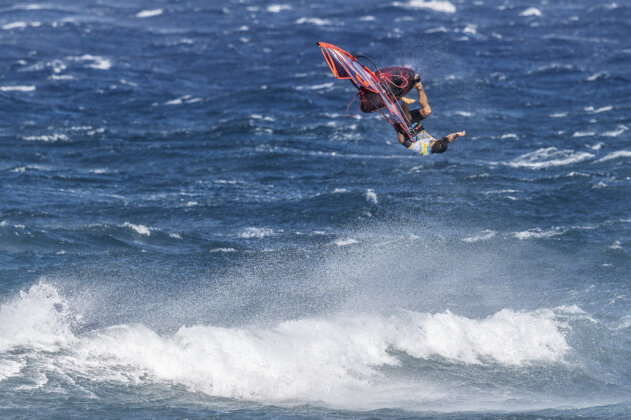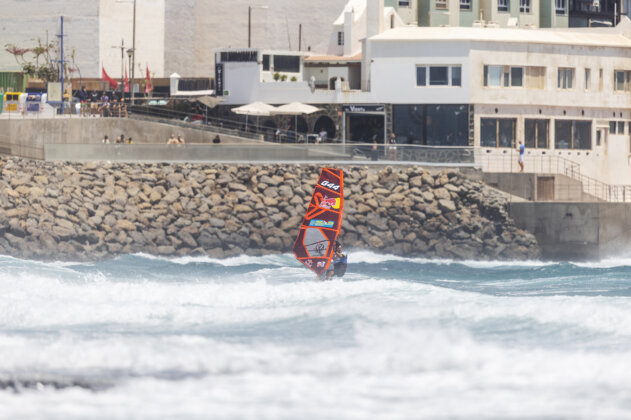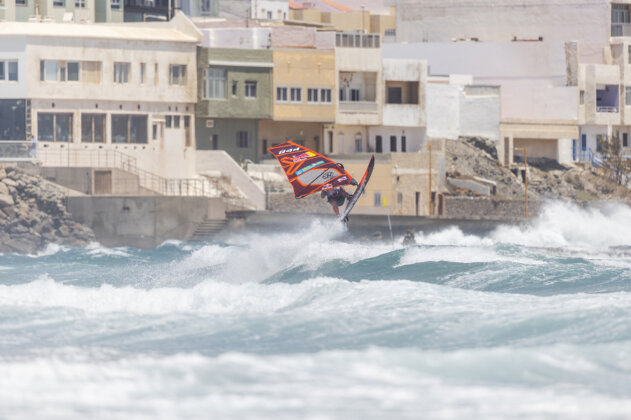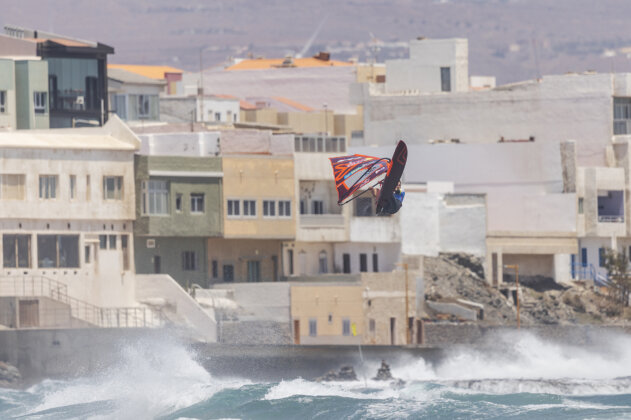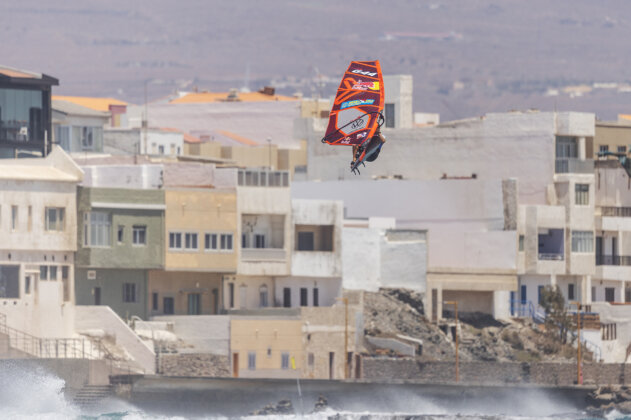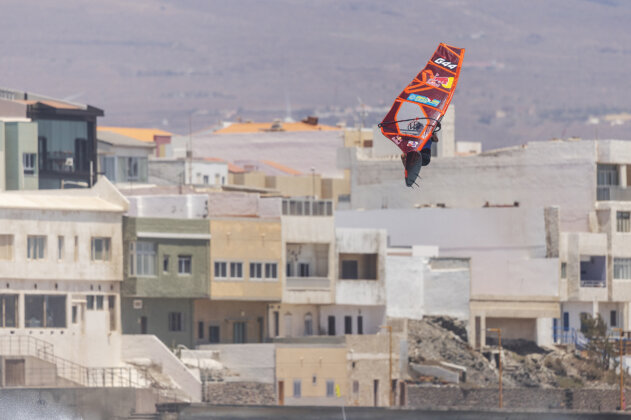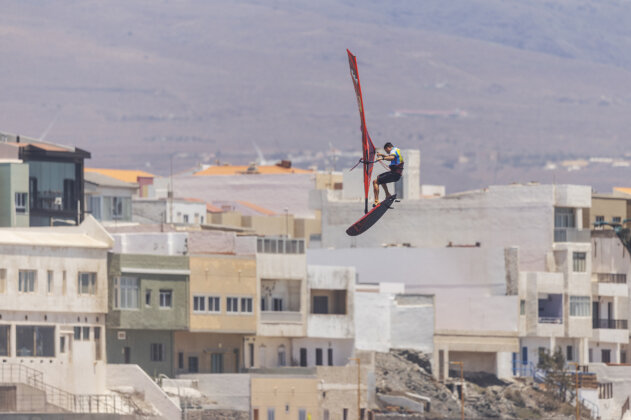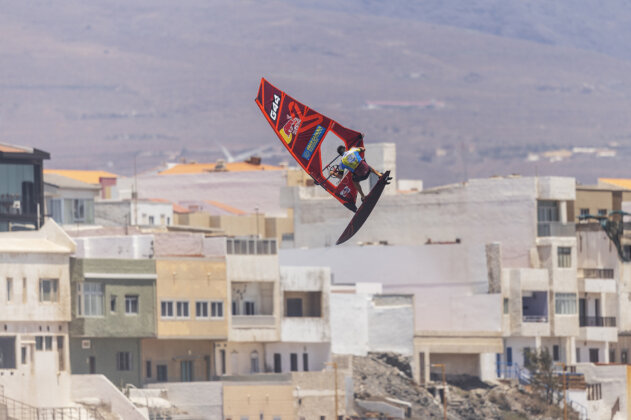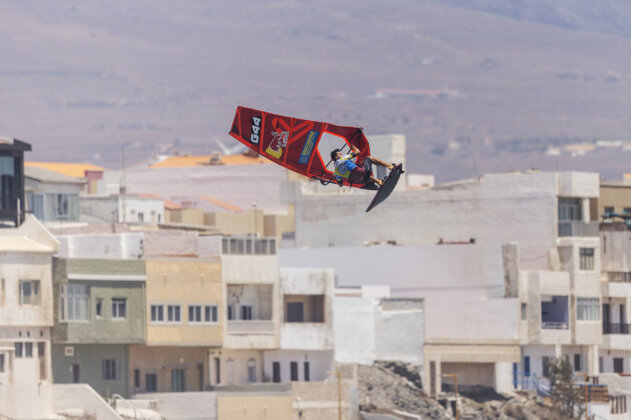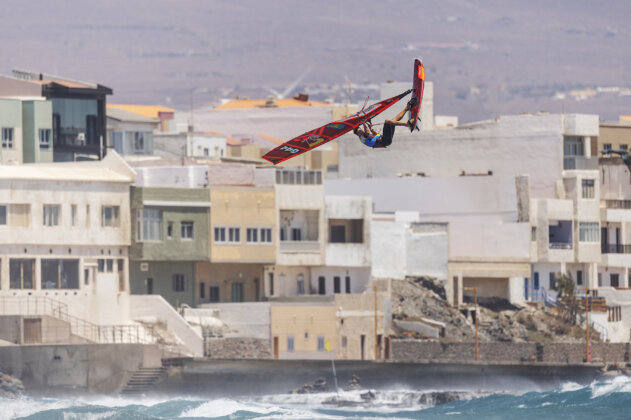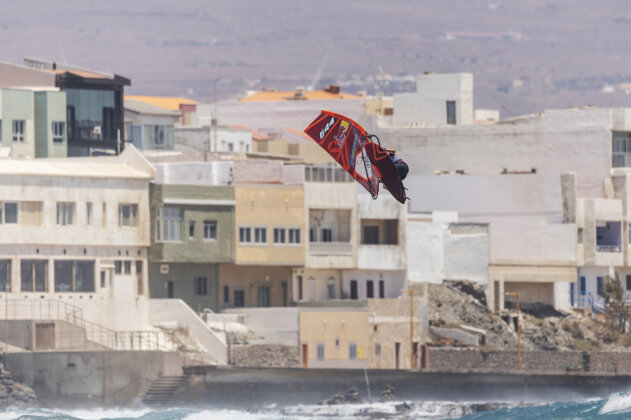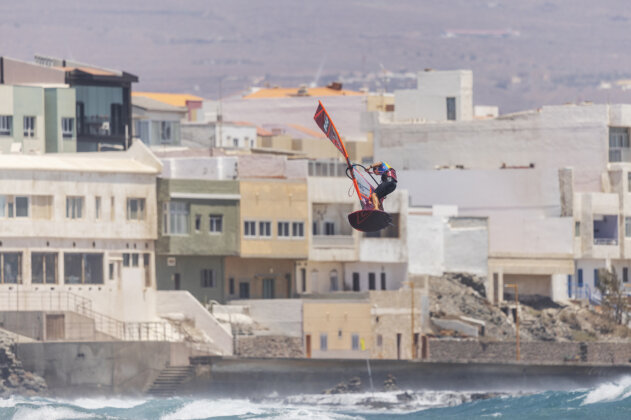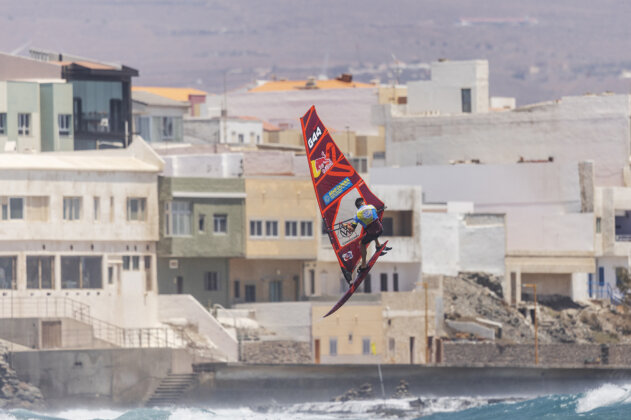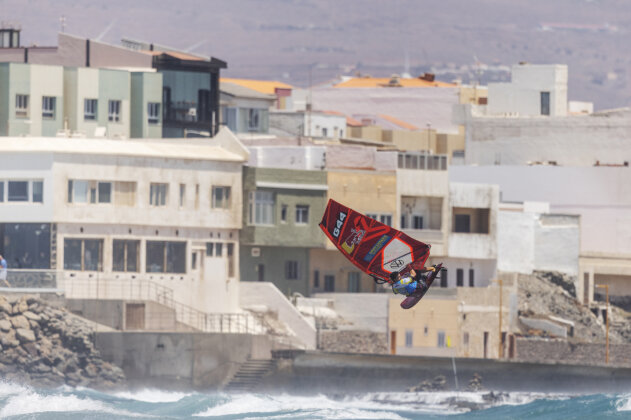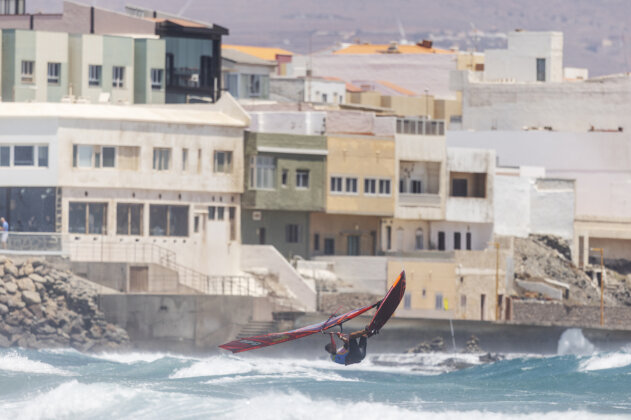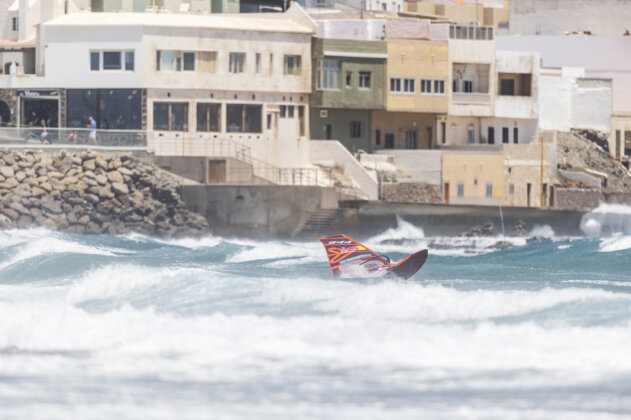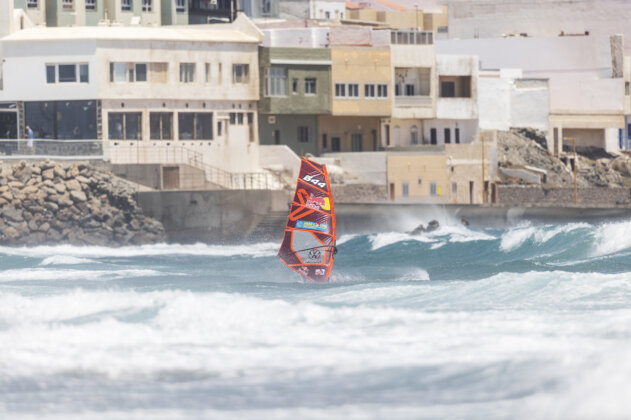PHILIP KÖSTER: THE NEXT LEVEL!
OK, technique time… but let’s be honest, these next-level moves are probably beyond what 99% of us mortals will ever consider trying. Still, it’s always fun to hear how they should be done by someone who actually can. Over to Philip Köster, to share his top tips on two moves that most of us will only ever dream of trying… the no-handed goiter and the stalled double forward.
- PHILIP KÖSTER
NO HANDED GOITER
WINDSURF: Let us kick off with the no-handed goiter. What’s the secret to that?
PK: “Well, basically the key is finding the right position for the sail so it’s neutral, so you don’t have any power in the sail, then you have to let it go. Otherwise, yeah, you get too much wind in the sail and you can’t really let it go.”
WINDSURF: And what sort of wave are you looking for?
PK: “The perfect wave for goiter is normally a broken one that comes towards you, kind of a bowl, yeah, so you can jump more forward and have more time to do that with the sail.”
WINDSURF: And what about when it’s cross-on…Is it easier to do a no-hander goiter than side shore?
PK: “I think side shore is OK still, but side-off, you can’t do it. This one was actually the one time that I landed it in the strongest wind, but I’ve done them in lighter winds, which is a bit easier maybe and less scary.”
WINDSURF: How did you get scored for it?
PK: “I did not get scored that much, but overall, I was kind of happy with the scoring in Gran Canaria this year. I mean, jumps and wave rides were kind of how it should be. OK, now the no-hander goiter was something new in the heat, but I would have loved to have scored a bit more to encourage me to go for more moves like this.”
- No Handed goiter Gran Canraia
THE STALLED DOUBLE
WINDSURF: Do you actually go higher on the single part of a stalled double than a high single?
“PK: Yeah, you have to hit the ramp at full speed, otherwise you can’t make high enough of a stall to do two rotations. You have to go very fast, otherwise you’re not going to make a good double or not even get a second rotation in. So, speed is the key to the double forward. Some people might be scared to even try a double, but if they slow down before the wave, it’s not going to work out. So you’ve got to go fast, got to be committed…that’s actually the best tip you can get.
And yes, you have to actually really go high up and at the highest part start the double.”
- Going big in GC
WINDSURF: Are you trying to get lift?
“PK: You have to get lift and then also the right rotation, otherwise you go a bit vertical and yeah, you don’t want to do that from that height. Then obviously, the wave shouldn’t be too steep, also not too flat…it should be kind of rounded, a nice ramp. Not too far down the line, not too far upwind. There are a few things you have to look for, but basically, speed is the most important thing and to be confident.”
WINDSURF: What is the difference between a regular double and a stalled double?
“Well, the double forward where you don’t do it stalled is kind of a safe double, I would say. I think 99% of the time you land it. That’s one of my safe moves…I know I can land it almost always. Whenever I get the chance with the right ramp, it works out.
It’s a great contest move. If you have a great double like that, it’s solid. But then if everyone does this kind of double, you’ve got to make it better. So how do you make it better? You do it stalled.
The stalled doubles are a bit more complicated. You have to really time it well…on the way up and down, depending on how much height you have. And then see if you land it right. There it’s really about how well you’ve trained your other doubles…your rotation has to be strong so you can land it well!”
WINDSURF: So, when you get to the top of a stalled double…what happens?
PK: “It’s different to a normal double where you’re just covering a lot of ground. Well, mastering stalled forward help you learn the stalled double. It’s just a different timing than to do the double, but I guess you learn it with tries. But yeah, you need to have a different timing….you need to know how much height you actually need to be able to complete the rotation.”
WINDSURF: And if you feel one’s going wrong, are you able to like un-stall it or un-double it?
PK: “No, you can’t really stop the rotation. Like in the normal flat doubles, you can actually after the first one open the sail and kind of stop the rotation and maybe even land in the normal forward. But stall doubles, you can’t really stop the rotation nicely. You’re going and you have to let go. Otherwise, you really injure yourself.”
- Letting go!
WINDSURF: And what about the landing?
PK: “You’re coming down from quite high and quite fast. You just rotate and hope you land. You crash a lot when you’re learning. Normally, it’s not that risky but it’s hard on the body. Once you get it right and you’ve trained it, the stalled double is actually it’s not that hard. I think push forwards are harder to land than stalled doubles. With the stalled double, even if you land good, you still get bruises on the legs and on the side of your body. It’s a pretty aggressive manoeuvre.”
WINDSURF: Just say it was like nuclear Pozo with a logo-high ramp, and if you just did a massive jump, you could go 60 feet…you wouldn’t want to do a stalled double then, would you? Or would you still do it?
PK: “You can try. I still haven’t injured myself in a high double. I’ve only seen a few stars a few times. With the stalled doubles, you can go very, very high. You should definitely wear a bit of protection…a protection wetsuit. Sometimes that’s enough, but I think you should wear something extra. Maybe a helmet too, in case you get it wrong. If you don’t have a controlled double, it’s very dangerous. But if you know what you’re doing, you can go for it.”
WINDSURF: For the regular lower double… you’re just initiating it early, flying around, and almost landing planing. Is that your technique for that?
PK: “Yeah, that’s the technique. I think if you can land double forward loops planing, you can progress further. You can go for the higher ones. But if you don’t land planing or aren’t confident and you don’t land that many, then you shouldn’t go for the stalled doubles.”
WINDSURF: So the stalled double…you’re not going to land that planing?
PK: “No, I don’t think so. Not really, no. You come down very fast, and you have to land it on the tail of the board. Otherwise, if you land flat, you’ll destroy yourself. I’d love to see someone land planing and still be fine afterwards, but I don’t think you’ll see that many times.
Then there’s also the tabletop stalled double, which is also great. I’ve done those a few years ago, but not this year. If you have to do it, if you ever take it that far, then yeah, you do it. But it’s a bit more complicated to get into the rotation.”
- Stalled double loop Gran Canaria

